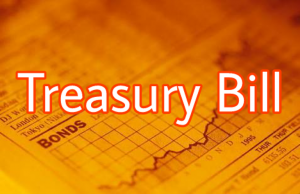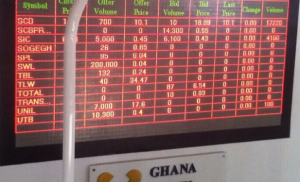The Bank of Ghana’s Monetary Policy Committee has maintained the policy rate at 14.5 per cent.
This comes after the MPC, last week, held its 104th meeting and the first meeting for the year.
The Committee deliberated on recent global and domestic developments and how they have shaped macroeconomic conditions and assessed risks to the inflation and growth outlook.
A summary of the assessment for 2021, the outlook for 2022 and the medium term, and key considerations that the Committee took into account in informing its decision on the stance of monetary policy is as follows:
1. The global growth momentum moderated somewhat in the last quarter of 2021, owing to continued supply chain bottlenecks and renewed concerns about the economic impact of the more transmissible Omicron COVID-19 variant. The latest release of the World Economic Outlook Update by the International Monetary Fund shows a downward revision of global growth projections for 2022 from 4.9 percent to 4.4 percent, due to growth downgrades for the United States and China. The forecast is contingent on supportive financing conditions and evolution of the COVID-19 pandemic amid new waves of infection and mutations of the virus.
2. Global price pressures intensified in 2021, primarily due to sharp increases in energy prices, rising demand pressures, and the persistent supply chain disruptions. As a result, headline inflation across several Advanced and Emerging Market economies rose above targets. These price trends have triggered reversals of the accommodative policies put in place to stimulate recovery from the pandemic. In the United States, the Federal Reserve Bank has continued with the tapering of its asset purchase programme and signalled its intention to bring forward planned rate hikes in 2022 to address rising underlying inflationary pressures. Similarly, policymakers in several emerging market economies continue to stay on the path of policy tightening in response Bank of Ghana Monetary Policy Committee Press Release 31 st January 2022 2 to rising inflation. Beginning in the last quarter of 2021, emerging market economies such as Chile and Brazil, have raised policy rates to contain rising inflation, while others have signalled their intention to raise policy rates if price pressures persist much longer than anticipated.
3. Global financial conditions began tightening in the second half of 2021 and this is expected to tighten further in 2022. The expectation of higher policy rates by major central banks has driven up long-term bond yields. Spreads on sovereign bonds have widened, especially for Emerging Markets (EMs) and frontier economies with weak fundamentals. Additionally, capital flows to EMs and developing economies have become volatile due to expectations about higher US interest rates and a strengthening of the US dollar.
4. On the domestic stage, the economy continued its strong recovery from the COVID-related economic downturn. The latest Ghana Statistical Service update showed that Real GDP growth for the first three quarters of 2021 averaged 5.3 percent, compared with an average contraction of 0.6 percent recorded in the same period of 2020. Similarly, non-oil GDP growth averaged 6.9 percent against a contraction of 0.3 percent over the same comparative period. Overall, GDP growth for 2021 is projected to exceed the target of 4.4 percent.
5. The Bank’s updated Composite Index of Economic Activity (CIEA) recorded an annual growth of 10.2 percent in November 2021, compared with 11.9 percent in the corresponding period of 2020. The key drivers of economic activity during the period were increased industrial production, consumption, exports, construction activities, and air-passenger arrivals.
6. The Bank’s latest confidence surveys conducted in December 2021 signalled mixed sentiments. While consumer confidence softened because of recent increases in ex-pump petroleum prices and the announcement of new tax measures in the 2022 budget, business sentiments, on the other hand improved. The improved business sentiments were driven by the achievement of short-term company targets and optimism about companies’ growth 3 prospects. In addition, the Ghana Purchasing Managers Index (PMI), which gauges the rate of inventory accumulation by managers of private sector firms and which measures dynamics in economic activity, increased for four consecutive months in the second half of 2021—a development which is consistent with the observation of a steady increase in economic activity.
7. After falling to 7.5 percent in May 2021, inflation increased throughout the second half of the year, ending December 2021 at 12.6 percent. Non-food inflation went up from 9.2 percent in May 2021 to 12.5 percent in December 2021 while food inflation, over the same period rose sharply, moving from 5.4 percent in May 2021 to 12.8 percent in December 2021. The upward trajectory of inflation in the second half of 2021 reflected food supply challenges, rising crude oil prices, and some pass-through effects of exchange rate depreciation in the last quarter. At 12.6 percent for December 2021, headline inflation had moved outside the upper band of the medium-term target by 2.6 percent.
8. In line with the increases in headline inflation, underlying inflationary pressures, measured across all the Bank’s core measures of inflation, also increased over the period. The main core inflation measure, which excludes energy and utility, increased from 7.3 percent in May 2021 to 11.8 percent in December 2021. In addition, the weighted inflation expectations index, which captures inflation sentiments of consumers, businesses, and the financial sector, also picked up significantly in December 2021.
9. The pace of growth in broad money supply (M2+) moderated significantly in December 2021, mainly driven by contraction in the Net Foreign Assets (NFA) of the depository corporations’ sector, relative to an expansion in the Net Domestic Assets (NDA). Broad money supply (M2+) recorded an annual growth of 12.5 percent in December 2021 relative to a growth of 29.6 percent for the corresponding period of 2020. In terms of components, the observed moderation in M2+ growth was driven by lower growth in currency outside banks and total deposits. Reserve money recorded an annual growth of 20.0 percent compared with 24.9 percent due to contraction in the NFA of Bank of Ghana.
10. On the external sector front, provisional trade balance for 2021 recorded a surplus of US$1.1 billion (1.6% of GDP) compared to a surplus of US$2.0 billion (2.8% of GDP) in 2020. The decline in the trade surplus was due mainly to increased imports as the economy rebounded. Total exports were estimated at US$14.7 billion in 2021, compared with US$14.5 billion in 2020. On a year-onyear basis, the lower total export growth of 1.8 percent was driven by a 25.2 percent contraction in gold receipts as production volumes declined by over one (1) million fine ounces during the year. Cocoa and crude oil receipts, however, grew by 20.3 percent and 35.6 percent respectively. Total imports, on the other hand, increased by 9.7 percent year-on-year to US$13.6 billion compared with US$12.4 billion. The growth in imports was attributed to a 43.8 percent growth in oil and gas imports. Of this, refined petroleum products increased by almost US$1 billion over the year reflecting the rebounding economy from the pandemic restrictions in 2020.
11. The lower trade surplus, together with higher investment income outflows stemming from increased interest payments, and higher profits and dividend repatriation, resulted in a current account deficit of US$2.5 billion (3.3 percent of GDP) in 2021, higher than the deficit of US$2.1 billion (3.1 percent of GDP) recorded in 2020. The capital and financial account recorded a surplus of US$3.3 billion based on higher inflows from foreign direct investments, portfolio flows, and the IMF-SDR allocation. Significant inflows into the financial and capital account in 2021, more than offset the deficit in the current account, resulting in an overall Balance of Payments surplus of US$510 million compared with a surplus of US$377.5 million recorded in 2020.
12. Gross International Reserves as at December 2021 stood at US$9.7 billion (equivalent to 4.4 months of import cover). This compares with a reserve position of US$8.6 billion (4.0 months of import cover) at the end of 2020. Gross Reserves have since increased to US$9.9 billion as at 28th January 2022. The strong reserve position provided some buffers for the local currency in 2021. Cumulatively, while the Ghana Cedi depreciated by 4.1 percent and 3.1 percent against the US Dollar and Pound Sterling, respectively in 2021, the Ghana Cedi 5 appreciated by 3.5 percent against the Euro. In the same period of 2020, the Ghana Cedi recorded depreciations of 3.9 percent, 7.1 percent, and 12.1 percent against the US Dollar, the Pound Sterling, and the Euro, respectively.
13. The performance of the banking sector in 2021 pointed to sustained growth in assets, deposits, and investments alongside improvements in the financial soundness indicators. In the year, total assets grew by 20.4 percent to GH¢179.8 billion as at December 2021. Asset quality however continued to reflect the general pandemic-induced repayment challenges as well as some bank-specific loan recovery challenges. From the peak of 17.3 percent in August 2021, the NPL ratio eased further to 15.2 percent at end-December 2021. Comparatively, the NPL ratio was 14.8 percent in December 2020.
14. The industry remained solvent with the average industry CAR of 19.6 percent well above the 11.5 percent regulatory minimum threshold. Core liquid assets to short-term liabilities was 25.9 percent in December 2021 compared with 27.8 percent a year ago. Net interest income grew by 14.5 percent to GH¢12.8 billion, lower than the growth of 20.9 percent a year ago partly due to decline in interest rates. Net fees and commissions however recorded a 24.8 percent growth to GH¢2.9 billion, compared with 5.0 percent last year, reflecting continued recovery in trade finance-related and other businesses of banks. This resulted in a 14.6 percent growth in total operating income to GH¢17.4 billion, compared with 17.9 percent growth last year. Operating costs increased by 14.2 percent, higher than the 8.2 percent growth for same period in 2020. Loan loss provisions however contracted by 4.7 percent as at end-December 2021 from the 28.0 percent growth recorded a year ago, following the reversal of over-provisioning at the height of the pandemic in 2020. Profit-before-tax increased by 22.1 percent in 2021 to GH¢7.4 billion, below the growth of 27.2 percent in 2020.
15. Credit performance improved marginally, consistent with the gradual recovery in the real sector. Annual nominal growth in private sector credit increased to 11.2 percent in December 2021 compared with 10.6 percent, in the corresponding period of 2020. However, sustained price pressures weighed on 6 real private sector credit, which contracted by 1.3 percent compared to a modest growth of 0.2 percent, over the same comparative period. The COVID19 regulatory policy measures were kept in place during 2021 and helped provide some support to lending activities of banks. New Advances extended by the commercial banks to the economy was GH¢36.4 billion, registering a growth of 6.8 percent compared with new advances of GH¢34.1 billion extended in 2020.
16. On the money market, interest rates reflected mixed trends across the yield curve. The 91-day and 182-day Treasury bill rates declined to 12.49 percent and 13.19 percent respectively in December 2021, from 14.08 percent and 14.13 percent respectively, in December 2020. Similarly, the rate on the 364- day instrument decreased marginally to 16.46 percent from 16.98 percent over the same comparative period. Rates on the 2-year and 5-year bonds increased to 19.75 percent and 21.00 percent respectively, from 18.50 percent and 19.85 percent respectively, while rates on the 3-year, 6-year, 7-year and 10-year bonds broadly declined. The rates on the 15-year and 20-year bonds, however, remained unchanged at 19.75 percent and 20.20 percent respectively, over the same comparative period.
17. The weighted average interbank rate declined further to 12.68 percent from 13.56 percent, induced by persistent structural liquidity on the interbank market. This transmitted to the retail end of the market, and average lending rates of banks declined marginally to 20.04 percent in December 2021 from 21.20 percent recorded in the corresponding period of 2020.
18. Provisional data on budget execution for 2021 indicated an overall broad fiscal deficit (cash, excluding financial sector clean-up costs) of 9.7 percent of GDP, against the programmed target of 9.4 percent of GDP. The corresponding primary balance for the period was a deficit of GH¢8.9 billion (2.0 percent of GDP), against a deficit target of GH¢8.7 billion (2.0 percent of GDP). Over the year, total revenue and grants amounted to GH¢67.9 billion (15.4 percent of GDP), below the projected GH¢72.5 billion (16.7 percent of GDP). Total 7 expenditure amounted to GH¢110.4 billion (25.1 percent of GDP), below the programmed target of GH¢113.8 billion (25.9 percent of GDP).
19. These developments impacted the stock of public debt which increased to 78.4 percent of GDP (GH¢344.5 billion) at the end of November 2021, compared with 76.0 percent of GDP (GH¢291.6 billion) at the end of December 2020. Of the total debt stock, domestic debt was GH¢179.4 billion (40.8 percent of GDP), while the external debt was GH¢165.1 billion (37.6 percent of GDP).
20. International commodity prices remained highly volatile during 2021, broadly reflecting the interplay of market forces. On a year-on-year basis, the average price of crude oil rose by 48.9 percent to US$74.8 per barrel in December 2021, due to moderated production levels by OPEC+ and sustained global demand, despite the spread of the Omicron variant. However, the average price of cocoa declined by 3.8 percent in year-on-year terms to trade at US$2,482.0 per tonne due to production shortfalls for the 2021/22 season. Gold prices also declined by 3.6 percent to average US$1,790.5 per fine ounce in December 2021.
Summary and Outlook
21. Notwithstanding the strong recovery in the global economy for 2021, growth momentum is projected to slow in the near-term reflecting unrelenting supply chain bottlenecks, rising input costs and pandemic-related uncertainties. Central banks are poised to deal with sustained rising inflation which is expected to lead to a higher interest rate regime in the global economy. Rising long-term bond yields and a strong US dollar will characterise overall financial conditions, which are expected to tighten in 2022. The spillover of these events should be evident in the course of 2022, and could cause currency pressures in emerging market economies with weak fundamentals and large foreign currency debt.
Financing needs will rise and pose challenges for sustaining the recovery in the face of rising inflation and unsustainable debt levels.
22. On domestic growth conditions, the Committee assessed that the revised quarterly GDP growth numbers affirms the strength of the post-Covid recovery. All the Bank’s high frequency economic indicators have picked up significantly 8 and currently at near pre-pandemic levels. Business sentiments are increasingly becoming optimistic and the information content derived from the Purchaser’s Managers Index all point to some optimism among industry players. Consumer confidence has however waned, on account of negative feedback from the significant increase in ex-pump petroleum price adjustments in the second half of the year and new tax measures announced in the context of the 2022 budget. Private sector credit growth is steadily picking up but remains negative in real terms. The expectation is for the banks to continue providing new advances to the economy to support private sector credit growth and boost economic activity. The Committee expects that these favourable conditions will persist in 2022.
23. Although budget implementation for 2021 remained fairly in line with expectations, fiscal and debt sustainability concerns regarding the budget for 2022 and implications for sustained fiscal consolidation efforts have triggered an unfavourable credit rating decision by Fitch Ratings which has spilled over to the external sector and may further exacerbate the already elevated inflationary expectations. Ghana’s sovereign bond spreads have widened significantly and led to a de facto closure to the International Capital Markets with implications for financing of the budget. Fiscal policy has responded to these concerns with an announcement of a further 20 percent cut in expenditures in 2022. This fiscal policy measure will help to provide for some correction, avoid the opening up of macroeconomic imbalances, and further deepen the fiscal consolidation agenda. This should also shift the consolidation process away from a revenue-led one, to one which encapsulates both revenue and expenditure measures signalling stronger commitment to keeping the deficit under check.
24. A steadfast implementation of the proposed measures will be needed to safeguard stability, foster credibility and re-anchor inflation expectations. The expenditure cut has been well accepted in the bond markets and decisive implementation of this fiscal correction will significantly define the outlook and mitigate the rising risk premium, as debt stabilizes.
25. Headline inflation has remained above the upper band of the medium-term target of 8±2 percent since September 2021. Additionally, all the core inflation measures, and inflation expectations have increased, which point to heightened underlying inflation pressures. The latest forecast shows that inflation would likely remain above target in the near-term, driven by both external and domestic factors, and only return to target in about four-quarters ahead. The key risks to the inflation outlook include: rising crude oil prices and its transmission to ex-pump petroleum prices and transportation costs, rising global inflation, food price uncertainties, and the fiscal outlook. The Monetary Policy Committee envisaged this scenario when it raised the policy rate in November 2021 to contain the inherent aggregate demand pressures likely to drive prices in the outlook. The Committee is of the view that the dynamics associated with the November 2021 policy rate hike are yet to be fully transmitted and expects the decisive implementation of the fiscal correction measures, especially the 20 percent cut in expenditure to help moderate the upside risks to the inflation outlook. The Committee will continue to monitor the impact of these policy measures and as needed call an extraordinary meeting to re-assess the inflation outlook over the forecast horizon and take the necessary policy decisions accordingly.
26. Under these circumstances, the Committee has decided to keep the policy rate unchanged at 14.5 percent.
Informational Note
The next Monetary Policy Committee (MPC) meeting is scheduled for 23rd – 25th March 2022. The meeting will conclude on Monday, 28th March 2022 with the announcement of the policy decision.




